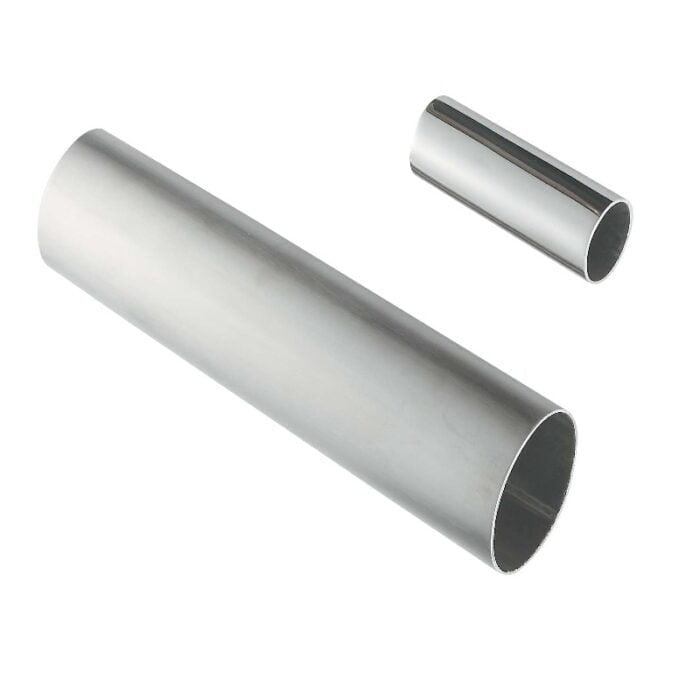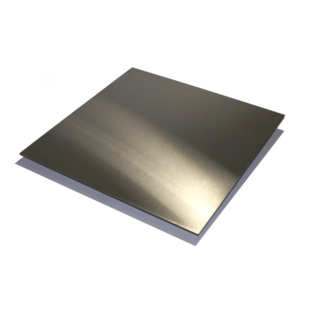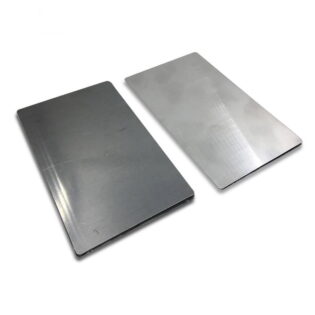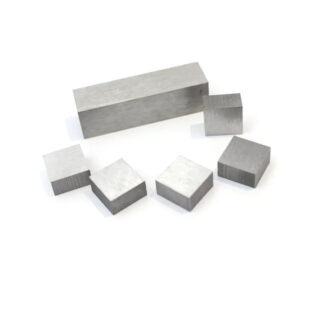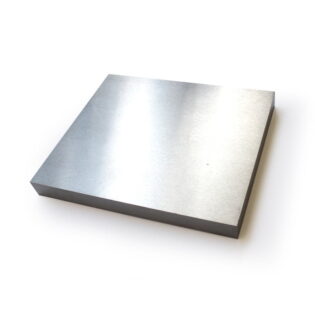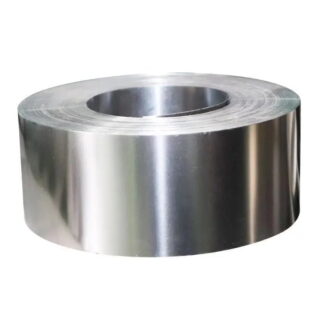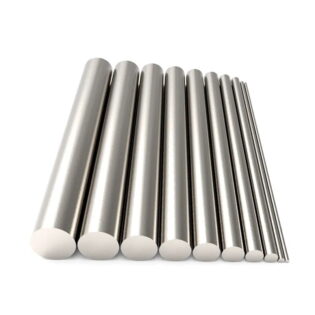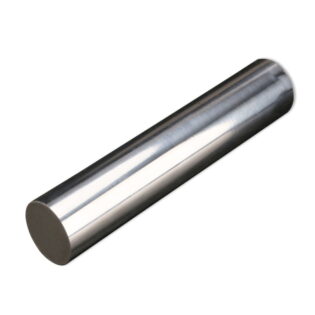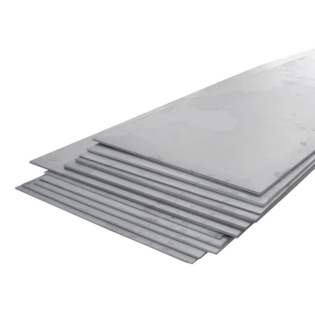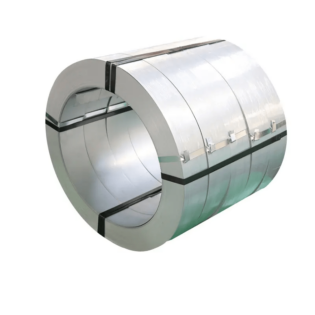304 Stainless Steel Description
- Chinese name: 304 stainless steel/06Cr19Ni10
- Foreign name: 304 stainless steel/SUS304
- Alias: SUS304, food grade stainless steel, food grade 304 stainless steel, 18/8
- Features: Corrosion resistant (not completely protected from corrosion), good toughness
- Semi-finished: stateHot rolled plate, cold drawn pipe
- Magnetic: Weak magnetism, the magnetism will become stronger after cold working such as stretching/pressing (can be attracted by magnet)
- National standard: GB/T 3280-2015
 304 stainless steel is a common material in stainless steel, with a density of 7.93 g/cm³, which is also called 18/8 stainless steel in the industry.
304 stainless steel is a common material in stainless steel, with a density of 7.93 g/cm³, which is also called 18/8 stainless steel in the industry.
High temperature resistant to 800°C, with good processing performance and high toughness , it is widely used in industry and furniture decoration industry and food and medical industry.
Common labeling methods on the market include 06Cr19Ni10 and SUS304 , among which 06Cr19Ni10 generally means china standard production, 304 generally means ASTM standard production, and SUS 304 means Japanese standard production.
304 is a versatile stainless steel , which is widely used to make equipment and parts that require good overall performance (corrosion resistance and formability). In order to maintain the inherent corrosion resistance of stainless steel , steel must contain more than 18% chromium and more than 8% nickel.
304 stainless steel is a grade of stainless steel produced in accordance with the American ASTM standard.
304 Stainless Steel Physical Properties
Tensile strength σb (MPa) ≥515-1035
Conditional yield strength σ0.2 (MPa)≥205
Elongation δ5 (%)≥40
Reduction of area ψ (%) ≥?
Hardness : ≤201HBW; ≤92HRB; ≤210HV
Density (20°C, g/cm³): 7.93
Melting point (°C): 1398~1454
Specific heat capacity (0~100°C, KJ·kg -1 K -1 ): 0.50
Thermal conductivity (W·m -1 ·K -1 ): (100°C) 16.3, (500°C) 21.5
Linear expansion coefficient (10 -6 ·K -1 ): (0~100°C) 17.2, (0~500°C) 18.4
Resistivity (20°C, 10 -6 Ω·m 2 /m ): 0.73
Longitudinal elastic modulus (20°C, KN/mm 2 ): 193
For 304 stainless steel, the Ni element in its composition is very important, which directly determines the corrosion resistance and value of 304 stainless steel.
The most important elements in 304 are Ni and Cr, but they are not limited to these two elements. The specific requirements are stipulated by the product standards. The common judgment in the industry is that as long as the Ni content is greater than 8% and the Cr content is greater than 18%, it can be considered as 304 stainless steel. This is why the industry will call this type of stainless steel 18/8 stainless steel.
In fact, the relevant product standards have very clear regulations on 304, and these product standards have some differences for different shapes of stainless steel. Below are some common product standards and tests.To determine whether a material is 304 stainless steel, it must meet the requirements of each element in the product standard. As long as one does not meet the requirements, it cannot be called 304 stainless steel.
1. ASTM A276 (Standard Specification for Stainless Steel Bars and Shapes)
| 304 | C | Mn | P | S | Si | Cr | Ni |
| Claim,% | ≤0.08 | ≤2.00 | ≤0.045 | ≤0.030 | ≤1.00 | 18.0-20.0 | 8.0-11.0 |
2. ASTM A240 (Chromium and Chromium-Nickel Stainless Steel Plate, Sheet, and Strip for Pressure essels and for General Applications)
| 304 | C | Mn | P | S | Si | Cr | Ni | N |
| Claim,% | ≤0.07 | ≤2.00 | ≤0.045 | ≤0.030 | ≤0.75 | 17.5-19.5 | 8.0-10.5 | ≤0.10 |
3. JIS G4305 (cold-rolled stainless steel plate, sheet and strip)
| SUS 304 | C | Mn | P | S | Si | Cr | Ni |
| Claim,% | ≤0.08 | ≤2.00 | ≤0.045 | ≤0.030 | ≤1.00 | 18.0-20.0 | 8.0-10.5 |
4, JIS G4303 (Stainless steel bars stainless steel rod )
| SUS 304 | C | Mn | P | S | Si | Cr | Ni |
| Claim,% | ≤0.08 | ≤2.00 | ≤0.045 | ≤0.030 | ≤1.00 | 18.0-20.0 | 8.0-10.5 |
The above four standards are just a few common standards, in fact, ASTM and JIS mention 304 more than these standards. Each standard actually has different requirements for 304, so to determine whether a material is 304, the accurate expression should be whether it meets the 304 requirements of a certain product standard. The material certificate generally requires the following types of reports:Detailed standard specification comparison: as of 2015-12-08
| Numbering | Standard/S30400 | C | Mn | P | S | Si | Cr | Ni | N | Cu |
| 1 | ASTM A276/A276M-15 | 0.08 | 2.00 | 0.045 | 0.030 | 1.00 | 18.0-20.0 | 8.0-11.0 | ||
| 2 | ASTM A959-11 | 0.07 | 2.00 | 0.045 | 0.030 | 1.00 | 17.5-19.5 | 8.0-11.0 | ||
| 3 | ASTM A240/A240M-15a | 0.07 | 2.00 | 0.045 | 0.030 | 0.75 | 17.5-19.5 | 8.0-10.5 | ||
| 4 | ASTM A182/A182M-15 | 0.08 | 2.00 | 0.045 | 0.030 | 1.00 | 18.0-20.0 | 8.0-11.0 | 0.10 | |
| 5 | ASTM A193/A193M-15 | 0.08 | 2.00 | 0.045 | 0.030 | 1.00 | 18.0-20.0 | 8.0-11.0 | ||
| 6 | ASTM A269/A269M-15 | 0.08 | 2.00 | 0.045 | 0.030 | 1.00 | 18.0-20.0 | 8.0-11.0 | ||
| 7 | ASTM A312/A312M-15a | 0.08 | 2.00 | 0.045 | 0.030 | 1.00 | 18.0-20.0 | 8.0-11.0 | ||
| 8 | ASTM A320/A320M-15a | 0.08 | 2.00 | 0.045 | 0.030 | 1.00 | 18.0-20.0 | 8.0-11.0 | ||
| 9 | ASTM A403/A403M-15 | 0.08 | 2.00 | 0.045 | 0.030 | 1.00 | 18.0-20.0 | 8.0-11.0 | ||
| 10 | ASTM A493-09(2013) | 0.08 | 2.00 | 0.045 | 0.030 | 1.00 | 18.0-20.0 | 8.0-10.5 | 0.10 | 1.00 |
| 11 | ASTM A554-15a (MT-304) | 0.08 | 2.00 | 0.045 | 0.030 | 1.00 | 18.0-20.0 | 8.0-11.0 | ||
| 12 | JIS G4303:2012 | 0.08 | 2.00 | 0.045 | 0.030 | 1.00 | 18.0-20.0 | 8.0-10.5 | ||
| 13 | JIS G4304:2012 | 0.08 | 2.00 | 0.045 | 0.030 | 1.00 | 18.0-20.0 | 8.0-10.5 | ||
| 14 | JIS G4305:2012 | 0.08 | 2.00 | 0.045 | 0.030 | 1.00 | 18.0-20.0 | 8.0-10.5 | ||
| 15 | GB/T 20878-2007 | 0.08 | 2.00 | 0.045 | 0.030 | 1.00 | 18.0-20.0 | 8.0-11.0 |
304 Stainless Steel Application
- System description: 304 stainless steel is the most widely used chromium-nickel stainless steel.
- As a widely used steel, it has good corrosion resistance, heat resistance, low temperature strength and mechanical properties; it has good hot workability such as stamping and bending. , No heat treatment hardening phenomenon (use temperature -196°C~800°C). It is resistant to corrosion in the atmosphere.
- If it is an industrial atmosphere or heavily polluted area, it needs to be cleaned in time to avoid corrosion. It is suitable for food processing, storage and transportation. Has good processing properties and weldability.
- Plate heat exchangers, bellows, household products (category 1, 2 tableware, cabinets, indoor pipelines, water heaters, boilers, bathtubs), auto parts (windshield wipers, mufflers, molded products), medical appliances, building materials, chemicals, food industry , Agriculture, ship parts, etc. 304 stainless steel is a nationally recognized food-grade stainless steel .
- Most of the requirements for use are to maintain the original appearance of the building for a long time. When determining the type of stainless steel to be selected, the main considerations are the required aesthetic standards, the corrosiveness of the local atmosphere, and the cleaning system to be adopted. However, other applications are increasingly seeking structural integrity or impermeability.
- For example, roofs and side walls of industrial buildings. In these applications, the owner’s construction cost may be more important than the aesthetics, and the surface may not be very clean. The effect of using 304 stainless steel in a dry indoor environment is quite good.
- However, if you want to maintain its appearance outdoors in the countryside and cities, you need to wash it frequently. In heavily polluted industrial areas and coastal areas, the surface will be very dirty and even rusty.
- However, to obtain the aesthetic effect in the outdoor environment, nickel-containing stainless steel is required.
- Therefore, 304 stainless steel is widely used in curtain walls, side walls, roofs and other construction purposes. However, 316 stainless steel is best used in severely corrosive industries or marine atmospheres. With stainless steel sliding doors, people have fully realized the advantages of using stainless steel in structural applications.
- There are several design criteria that include 304 and 316 stainless steel. Because “duplex” stainless steel 2205 has integrated good atmospheric corrosion resistance with high tensile strength and elastic limit strength, this steel is also included in the European standards. Product shape In fact, stainless steel is manufactured in full-standard metal shapes and sizes, and there are many special shapes.
- The most commonly used products are made of thin plates and strip steel, and medium and heavy plates are also used to produce special products, such as the production of hot-rolled structural steel and extruded structural steel. There are also round, oval, square, rectangular and hexagonal welded pipes or seamless steel pipes and other forms of products, including profiles, bars, wires and castings.
304 Stainless Steel Processing Method
Etching
The etching process is to screen-print an acid-resistant protective film on the surface of stainless steel, and then etch with ferrous chloride liquid to form an artistic pattern.
Spray color
The color spray method is to spray pigment particles after screen printing to form a pear-like surface and form an artistic pattern.
Crafting process
The process of the color spray art processing method of stainless steel products is: stainless steel products → silk screen → etching → alkali treatment → silk screen → oxidation coloring → alkali treatment → finished product.
The process of the etching art processing method of stainless steel products is: stainless steel products → silk screen → etching → alkali treatment → oxidation coloring → finished product.
The chemical coloring method of stainless steel does not use pigments and dyes. Instead, the stainless steel is soaked in a heated concentrated chromium sulfate solution for chemical coloring. It is characterized by good food resistance. The ink used in this processing method must have very strong acid resistance, and generally use UV vulcanized ink with special properties that is compatible with the treatment process.
Stamping
Stainless steel products, especially stainless steel strips , are often the most primitive processing method of the factory is to use a punch for stamping products. Stamping includes two methods: straight punching and stretching. Generally, the hardness lower than 1/2 is used for stretching and bending, and the hardness higher than 1/2 is harder, all of which are straight punching.
The rust of 304 stainless steel material may have the following reasons:
Chloride
Chloride ions are widespread, such as salt/sweat traces/sea water/sea breeze/soil and so on. Stainless steel corrodes quickly in the presence of chloride ions, even exceeding that of ordinary low-carbon steel. Therefore, there are requirements for the use environment of stainless steel, and it needs to be wiped frequently to remove dust and keep it clean and dry.
There is an example in the United States: a company uses an oak container to hold a solution containing chloride ions. The container has been used for nearly a hundred years. It was planned to be replaced in the 1990s. Because the oak material is not modern enough, the container was replaced with stainless steel 16 days later. Leaking due to corrosion.
Solution treatment
The alloy elements are not dissolved into the matrix, resulting in low alloy content of the matrix structure and poor corrosion resistance.
Intergranular corrosion
This material without titanium and niobium has a tendency to intergranular corrosion. Adding titanium and niobium, together with stabilization treatment, can reduce intergranular corrosion.
A high-alloy steel that can resist corrosion in the air or in chemically corrosive media. Stainless steel has a beautiful surface and good corrosion resistance. It does not need to undergo surface treatment such as plating, but uses the inherent surface properties of stainless steel.It is used in many applications.
A kind of steel, usually called stainless steel. High-alloy steels such as 13 chrome steel and 18-8 chrome-nickel steel represent performance. From a metallographic point of view, because stainless steel contains chromium, a very thin chromium film is formed on the surface.
This film isolates the oxygen from the intrusion of the steel and acts as a corrosion resistance.In order to maintain the inherent corrosion resistance of stainless steel, steel must contain more than 12% chromium.
Used in occasions where welding is required. The lower carbon content minimizes the precipitation of carbides in the heat-affected zone near the weld, and the precipitation of carbides may cause stainless steel to produce intergranular corrosion (welding erosion) in certain environments.
Surface mark phenomenon
- The phenomenon of surface marks refers to the occurrence of wire-mounted or dot-shaped dent marks on the surface of 304 stainless steel after deep processing or grinding of processed products.
- Reason: There are foreign bodies on the surface and the surface of the mold, and there are scars on the surface of the edge holder.
- Countermeasures: Remove foreign bodies and scars before processing, and you can also remove orange peel by adequate grinding.
- Orange peel phenomenon refers to the phenomenon that the surface of 304 stainless steel molded products has a shape like orange peel under grinding or other conditions.
- Reason: Insufficient grinding, the larger the processing, the more serious the orange peel, the coarser grains of the raw materials, and the softening of the heat treatment.
- Countermeasures: Fully grind deep-processed products, select suitable heat treatment conditions, and control the grain size of raw materials.

